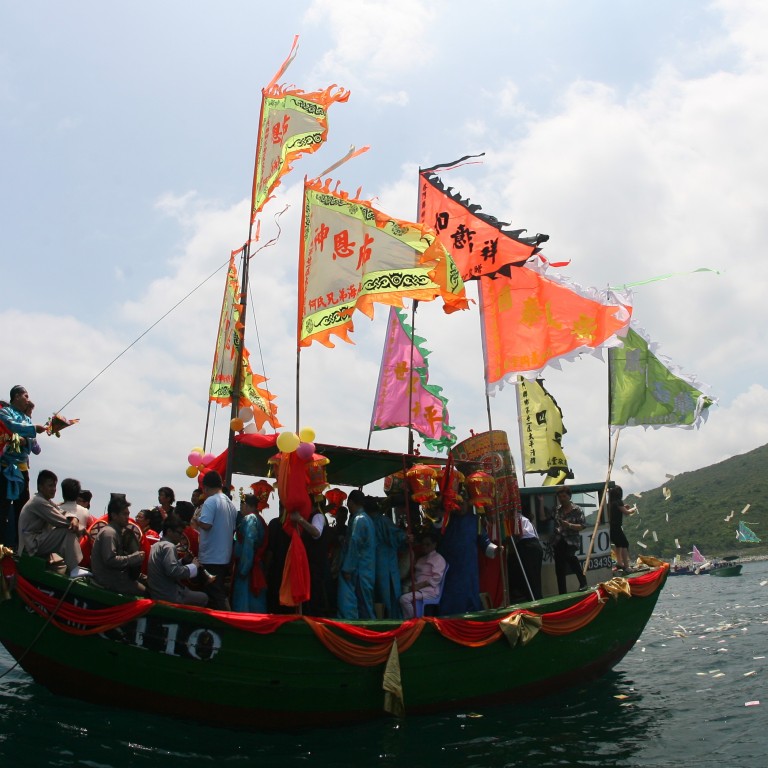
Hong Kong’s Hakka and Tanka villagers to unite on Tap Mun island for once-a-decade Taoist celebration of their fishing heritage
- Tai Ping Ching Chiu festival preparations garner a record HK$8 million in donations to help small communities in the northeast New Territories pay homage to the Goddess of the Sea
In a city home to thousands of high-rises, buzzing streets and luxurious shopping malls, there is a celebration that reminds Hong Kong of its humble past as a fishing village. The Tai Ping Ching Chiu, also known as Da Jiu, is a colourful Taoist festival celebrated annually in different parts of Hong Kong each year.
The most famous is the Cheung Chau Bun Festival, held yearly on the island complete with its own bun scrambling competition. But other rural villages celebrate the occasion less frequently, and 2019 is the turn of Tap Mun, also known as Grass Island.
The village throws its glad rags on only once a decade for an even more extravagant show. It is holding its 22nd celebrations between April 23 and 28.
Tanka and Hakka villagers across the New Territories will flock to Tap Mun’s Mirs Bay to pay their respects to Tin Hau, Goddess of the Sea, who they believe protects them. The isle is a one-hour boat ride from Ma Liu Shui pier in Sha Tin.
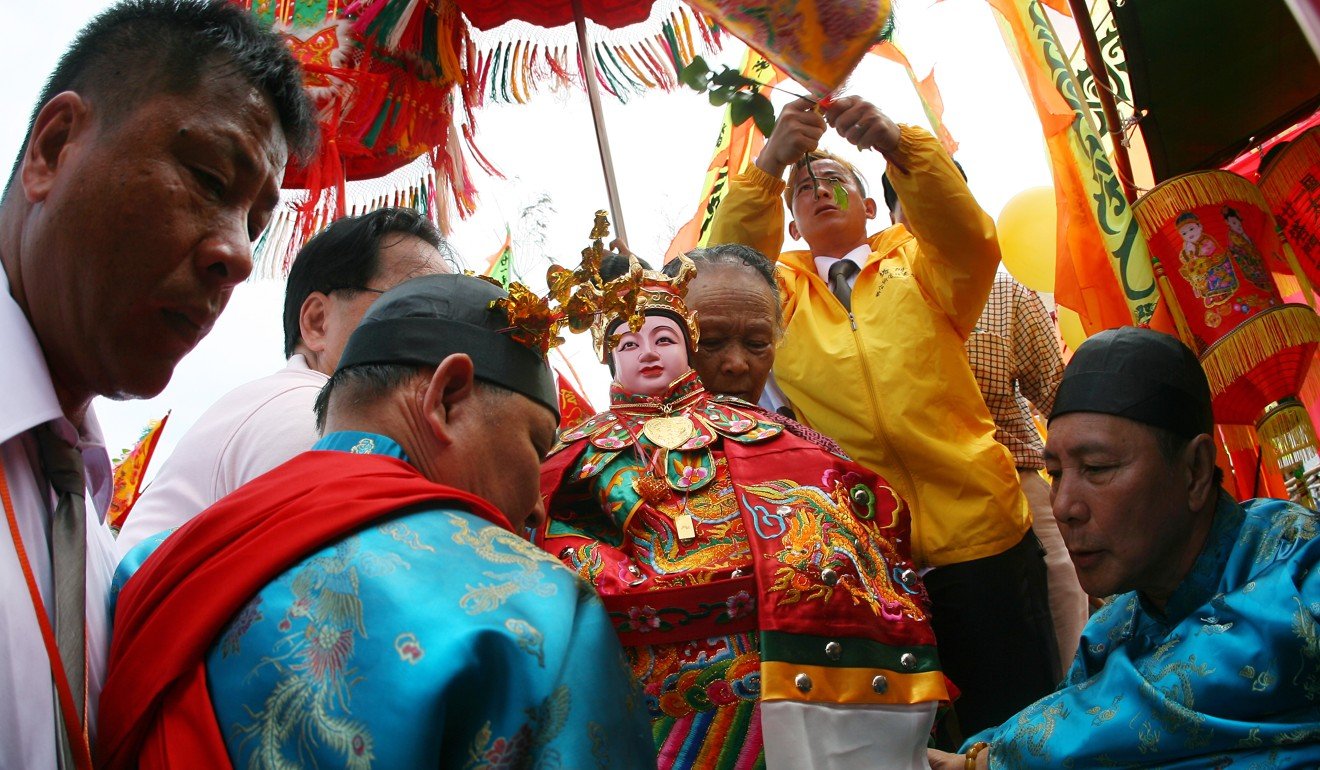
Story behind the celebration
Life was hard for Tanka fisherfolk. In 1778, the To clan gathered on Tap Mun to celebrate a family wedding. A thunderstorm erupted suddenly and screaming winds tore across the harbour. The villagers knelt down and prayed for the intercession of Tin Hau, who they believed safeguarded their community, boats and livestock. They promised to stage a Tai Ping Ching Chiu celebration every 10 years if she saved them from the storm’s fury. Some 220 years later, the promise is still being honoured.
The event can be traced back to the late Qing dynasty when fishing was a major economic activity, says David Ho Tai-wai, chairman of the organising committee. Ho says the signature event has grown into a must-do experience and always attracts many fisherfolk.
Six people killed by fires as Ching Ming Festival sees spike in burnt offerings at family tombs
Why is it special?
The six-day event is unique. What sets it apart from other Da Jiu on land is that it is a joint effort by villages – namely Tap Mun, Kat O, Ko Lau Wan, Sam Mun Tsai, Shum Wan and Sam Mo Shek – scattered across islands in the northeastern waters off the New Territories.
In the past many fishermen worked and lived in the area with their families, all of them devotees of the goddess. Back in the 1970s it was easy to gather 600 to 700 fishing boats, big and small, at Tap Mun so crews could hold their rituals. Today it’s a different story, with poor prospects for fishermen, few newcomers joining their ranks and the size of the fishing fleet having plunged.
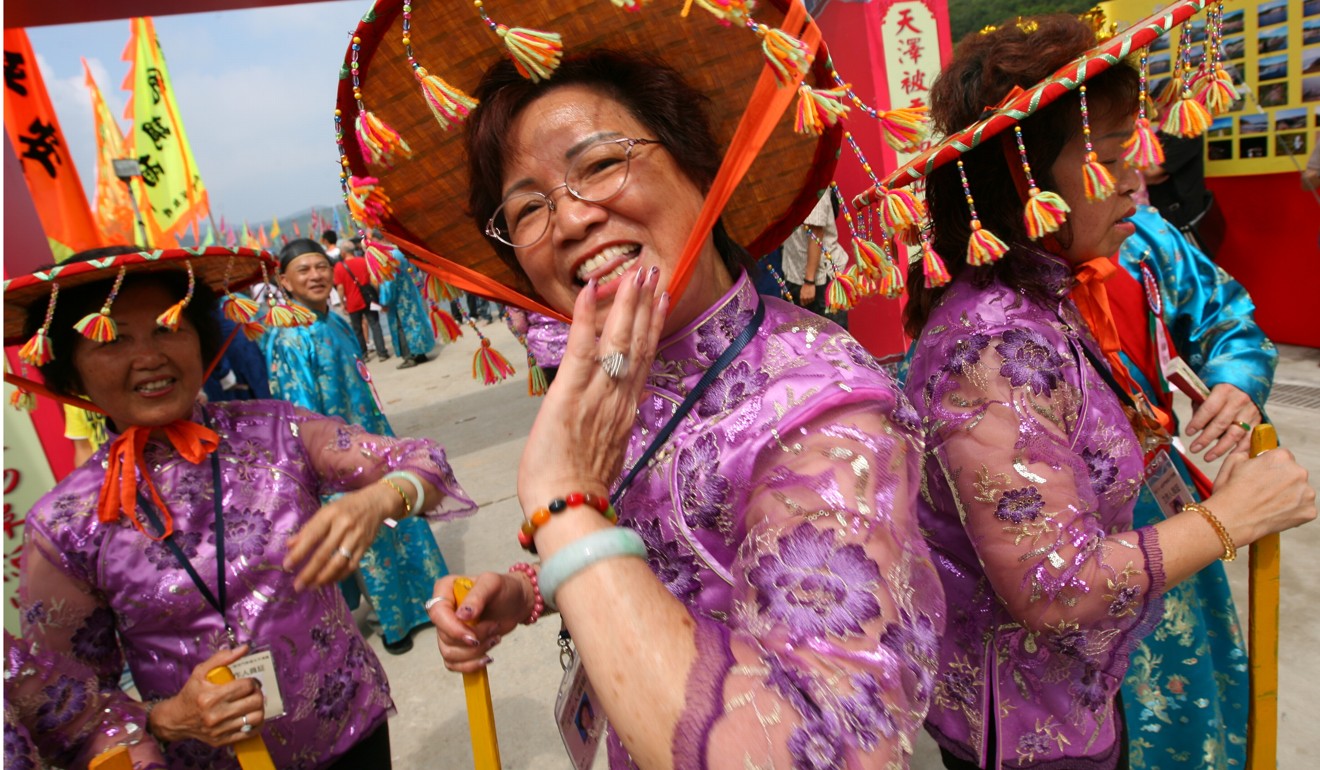
This year, Luen Yick Fishermen Village will join for the first time, taking the number of participating villages to seven. Built in 1975 to house relocated fishermen, Luen Yick has until now not been involved in the festival due to a strong Christian influence among its residents. According to village representative Chan Mei-tak, this influence can be traced back to the past efforts of two Christian priests and several rural leaders. They helped apply for land from the government and also approached various sources and networks to fund the construction of a permanent home in Tai Po.
Chan, 62, is originally from Leung Shuen Wan Chau in Sai Kung and moved to Tai Po in the 1980s.
During Ching Ming Festival, cardboard smartphones, restaurants and slot machines for Hongkongers’ departed ancestors
“I am not a Christian but respected the wishes of our senior leaders who didn’t want to tie our place up with other religious activities,” he says.
But after the last influential leader died a few years ago, Chan says David Ho invited the village to join with the six others to stage the celebration. He went back to his village for consultations and reached a consensus to join.

“It is a meaningful event to uphold and carry on the culture and traditions of fishing villages,” Chan says. “Although a latecomer, I feel excited about my participation in the organising committee because it’s no longer an onlooker experience.
“Apart from tradition, culture and rituals, I have gained new knowledge concerning protocols for traditional ceremonies, taboos and even procedures handed down by ancestors.
“As the big day approaches, villagers feel grateful that finally they have their own festival to celebrate.”
He says the elderly were especially thrilled because the occasion promoted reunions with relatives and old friends.
Can qigong cure cancer? Ill-stricken Chinese find hope in once-demonised Taoist regimen
What happens at the festival?
The official blessing ceremony on April 25 will be attended by guests from various bodies, including the Home Affairs Bureau, Tai Po District Office, Heung Yee Kuk, marine police and central government liaison office. There will also be many attractions for visitors, Ho says, such as a puppet show, vegetarian feast and Chinese opera.

The following day a flotilla with three Tin Hau statues will leave Tap Mun harbour at 11am and wind its way around the island. Halfway through the journey it will stop to let Taoist monks perform a blessing ceremony and give thanks to the gods of the sea. The process usually takes about an hour and boats take visitors to observe the blessing rituals. Most of the 3,500-odd visitors will be aboard about 70 vessels witnessing the ceremony, according to Ho. Visitors are advised not to bring any meat to the island during the spiritual purification period, in which only vegetarian meals are served.
Hong Kong’s Taoist funerals: the superstition, symbolism and how to stop your soul being dragged into the coffin
Preparing for the big event
In the weeks leading up to the celebrations, craftsmen, workers and villagers started to gather each day at Tap Mun to painstakingly add the final touches to the venues.
Right next to Tap Mun, Ko Lo Wan lies on the windward side of the Sai Kung peninsula, and also maintains faith in the Goddess of the Sea. Village representative Chan Tin-yau is delighted his 70-member team has managed to secure two wooden vessels to support the celebrations.
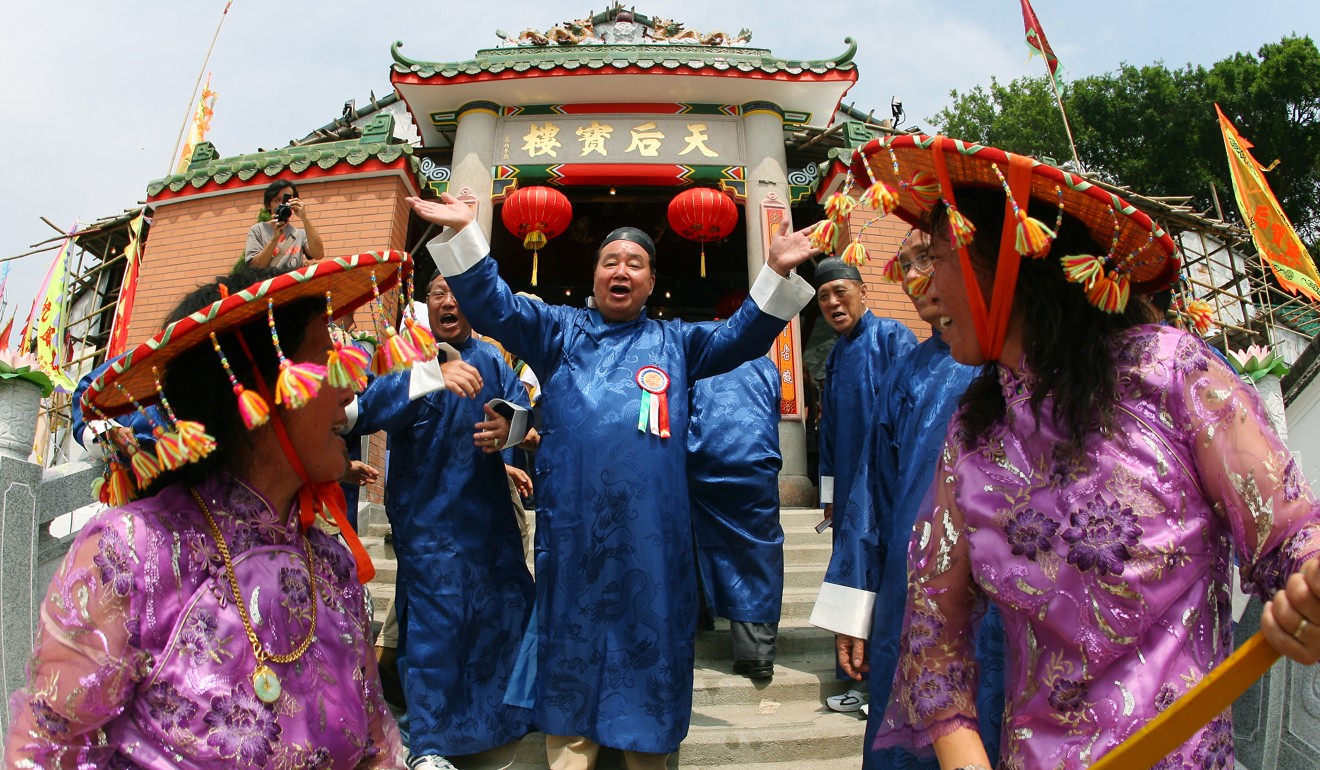
“Back in the old days, a lot of our villagers came from Tap Mun so both villages still have a very close relationship,” Chan says. “Since the village now has a population of fewer than 50 we decided to recruit energetic ex-villagers who mostly live in the city. Thanks to this being a reputable celebration, we easily tracked down a multi-generation team of volunteers. They were keen to take part and have kept the momentum going.”
Preparations started two years ago when Ho called for the setting up of an organising committee for this edition, he says. At the time, he expressed concerns about an inadequate budget and the lukewarm reactions of the communities involved, since they relied heavily on donations from local and overseas villagers. In view of economic uncertainty they budgeted only HK$7 million (US$892,000) – the same amount as for the previous celebration. Ho says he acted like a “bean counter” to keep costs down.
Is Hong Kong’s fishing industry being thrown a lifeline and will the farmers take the bait?
“For example, the puppet show was performed by local performers rather than overseas specialists while lavish waterfront lighting structures and decorations had to be cut,” he says.
Transport and manpower were the biggest expenses because so many of the materials and resources had to be shipped there, Ho adds. The cost of building a 900-seat bamboo opera theatre has jumped 100 per cent to HK$1.1 million.
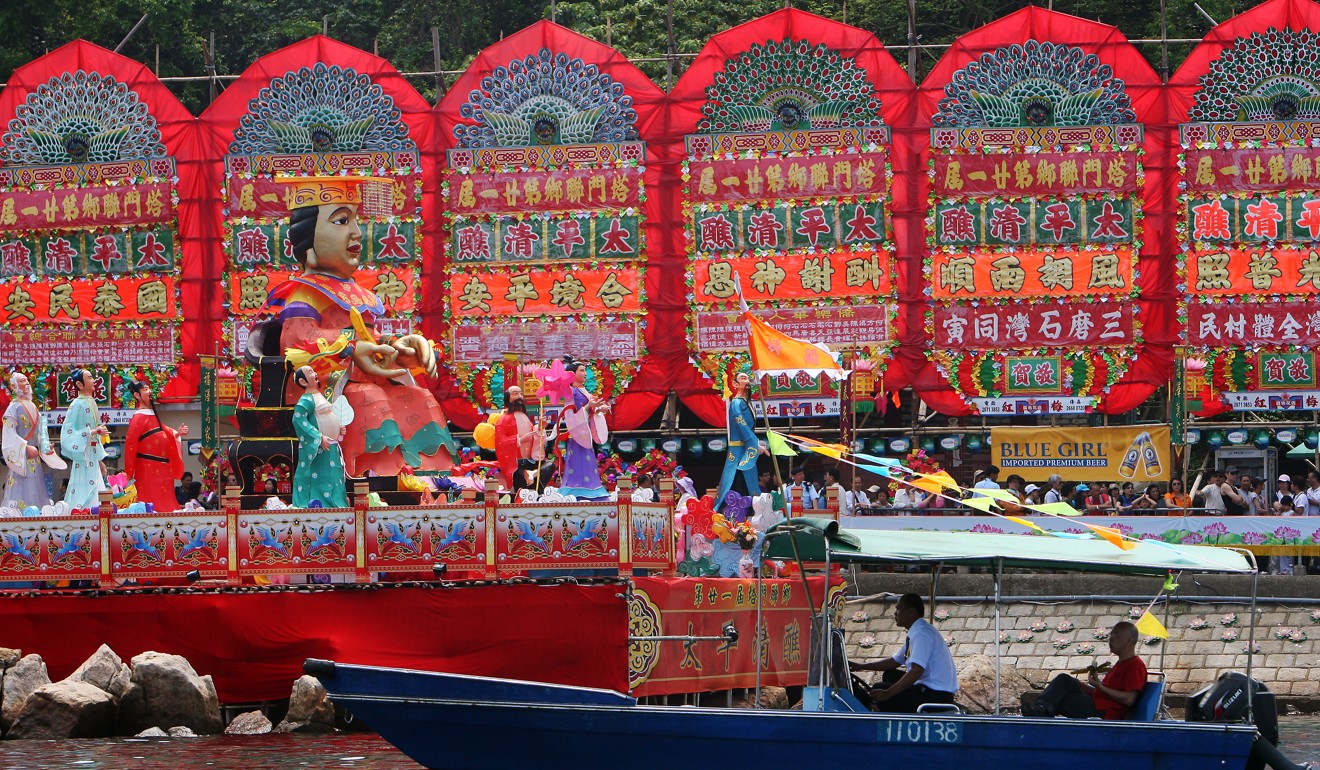
“Throughout the work we made it clear our objective was not to play it differently but keep the momentum simple. For sure, the format and content of the celebration were intact, strictly following traditional practices,” he says. “One example was the rare scene of three Tin Hau statues from Tap Mun, Kat O and Yim Tin being worshipped under one roof, and the sea parade with these three merciful ‘sisters’ on board – that was indeed a majestic sight.”
But when the fundraising campaign kicked off in March 2018, which adopted a two-pronged approach, it went better than expected. Some 60 committee members, most of them village representatives, took responsibility for collecting donations, while three other members spent two weeks in Britain seeking monetary support.
Secretary Lai Ka-wai said: “Many descendants migrated to Britain, and our representatives actually left their footprints across most of the prosperous cities, that is, London, Aberdeen, Liverpool, Glasgow and Southampton, and in Fife. To our surprise, our campaign was very well received locally and internationally with donations totalling a record HK$8 million, with about HK$2.2 million coming from overseas donors in Britain, Canada, Australia and the United States. Furthermore about 200 ex-villagers now settled overseas have come back for the celebration.”
